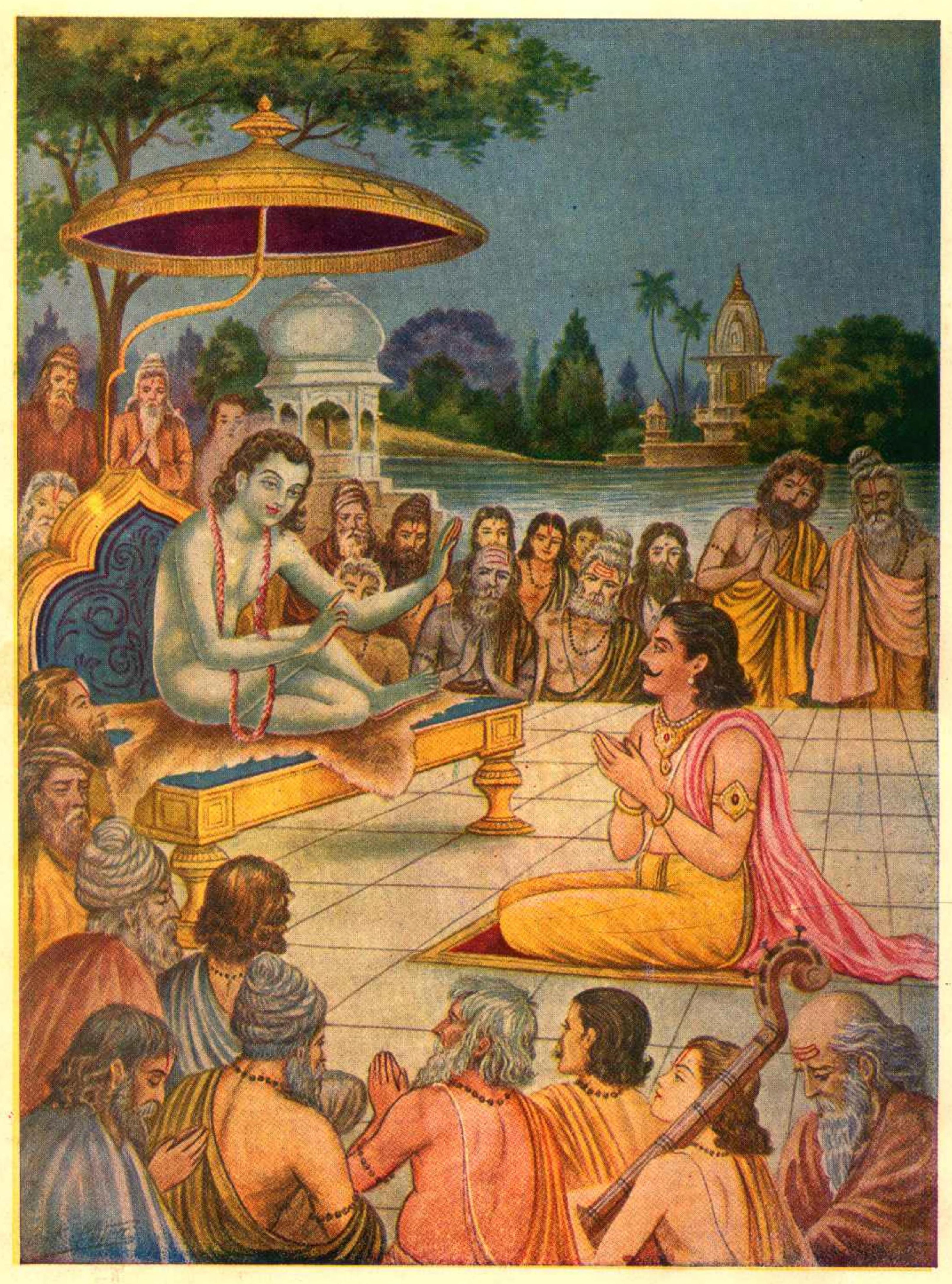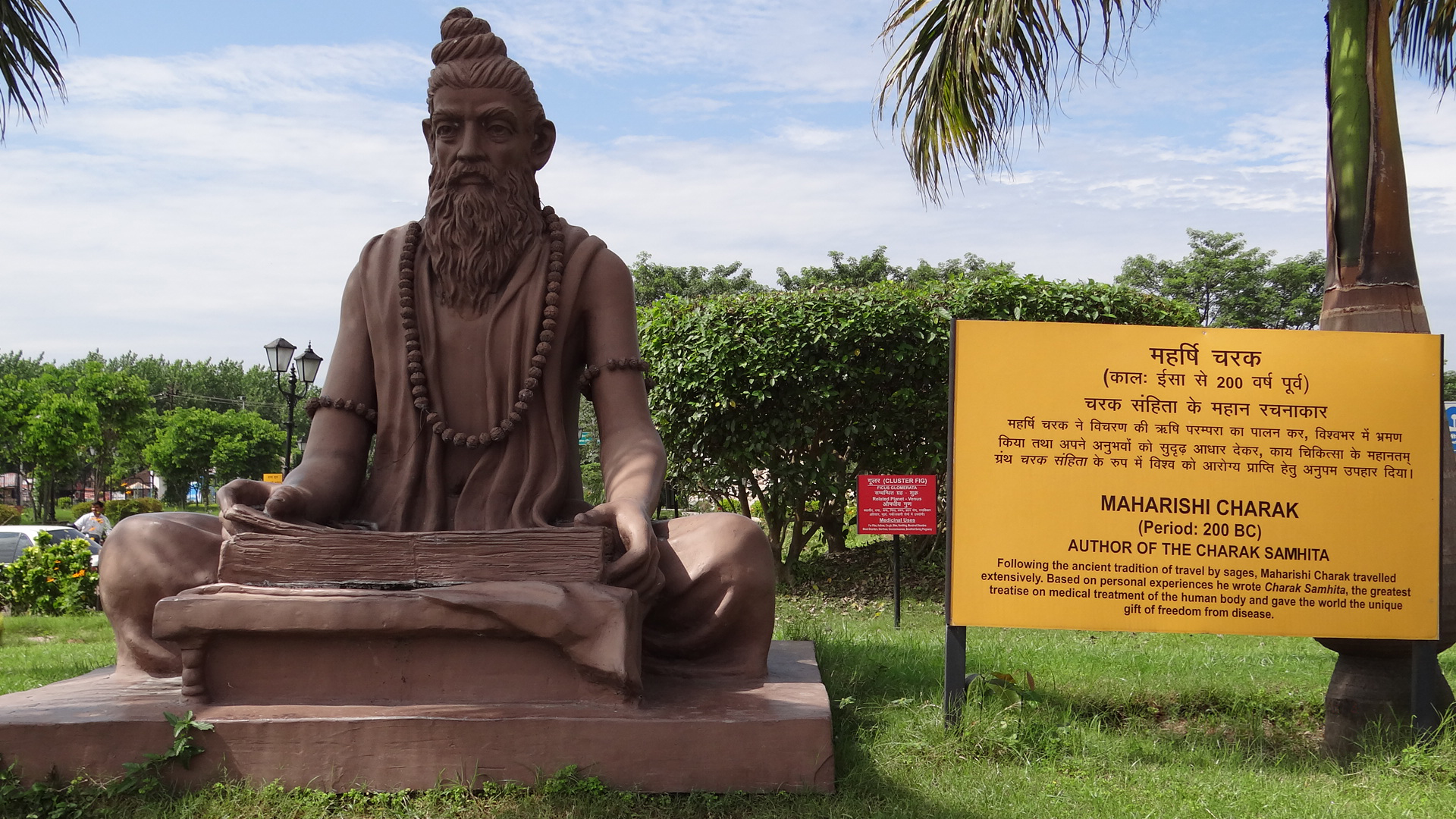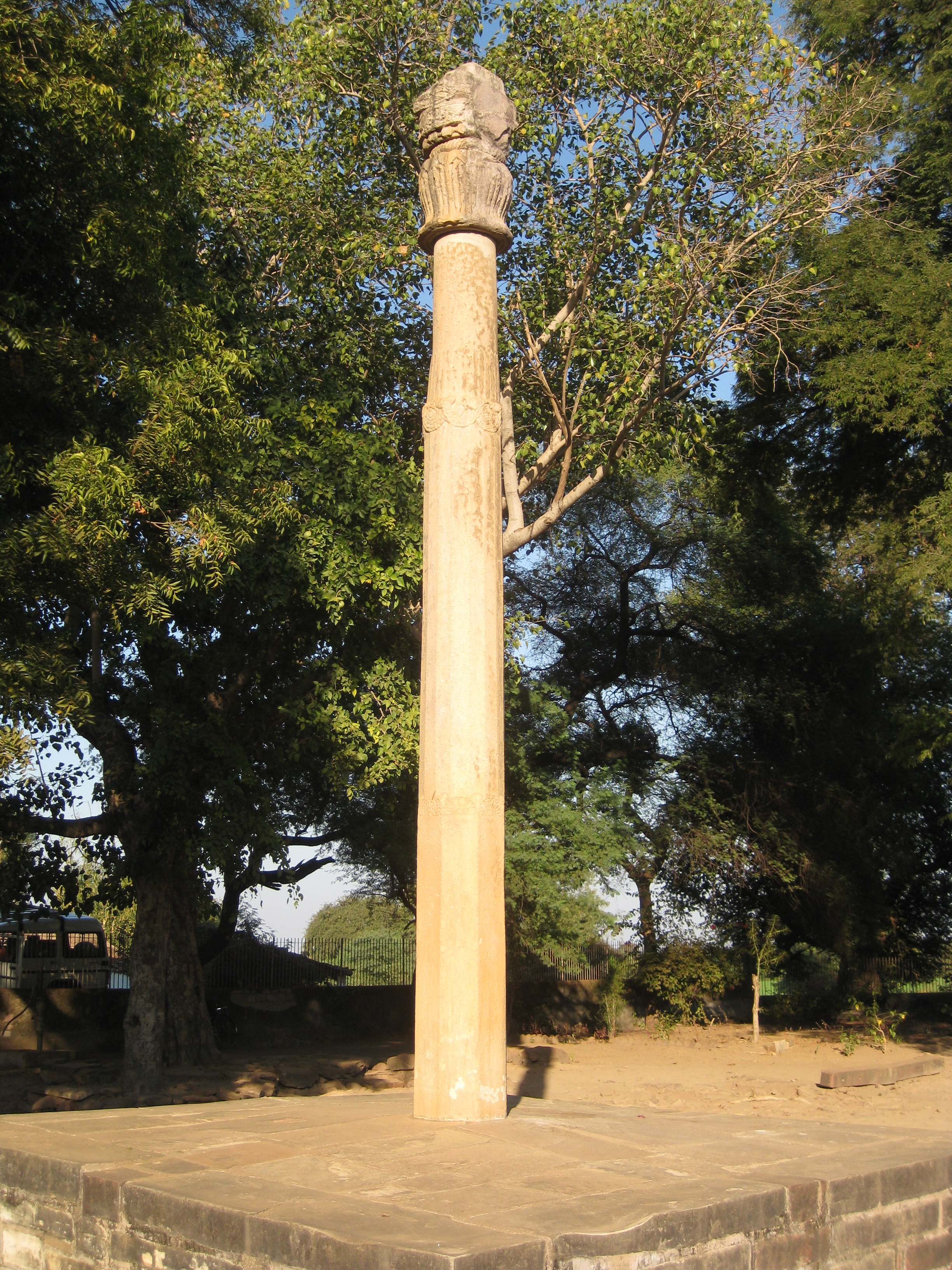|
Purusha Sukta
Purusha Sukta (, ) is a hymn in the Rigveda, dedicated to the Purusha, the "Cosmic Being". It is considered to have been a relatively late addition to the scripture — probably, to accord theological sanction to an increasingly unequal Kuru polity — and is the only hymn to mention the four '' varnas'' in explicit, alluding to a hierarchical division of the society. The hymn is also found in the three other Vedas but in slightly different forms. Contents The Purusha Sukta gives a description of the spiritual unity of the universe. It presents the nature of Purusha, or the cosmic being, as both immanent in the manifested world and yet transcendent to it.The Purusha sukta iDaily Invocationsby Swami Krishnananda From this being, the Sukta holds, the original creative will (identified with Vishvakarma, Hiranyagarbha or Prajapati) proceeds which causes the projection of the universe in space and time. The Purusha Sukta, in the seventh verse, hints at the organic connectedness of ... [...More Info...] [...Related Items...] OR: [Wikipedia] [Google] [Baidu] |
Vishvakarman God And Five Rishi's
Vishvakarma or Vishvakarman (, ) is a craftsman deity and the divine architect of the devas in contemporary Hinduism. In the early texts, the craftsman deity was known as Tvastar and the word "Vishvakarma" was originally used as an epithet for any powerful deity. However, in many later traditions, Vishvakarma became the name of the craftsman god. Vishvakarma crafted all of the chariots of the devas and weapons including the ''Vajra'' of the god Indra. Vishvakarma was related to the sun god Surya through his daughter Sanjna. According to the legend, when Sanjna left her house due to Surya's energy, Vishvakarma reduced the energy and created various other weapons using it. Vishvakarma also built various cities like Lanka, Dvaraka, and Indraprastha. According to the epic ''Ramayana'', the ''vanara'' (forest-man or monkey) Nala was the son of Vishvakarma, created to aid the avatar Rama. Literature and legends Vedas The term Visvakarman was originally used as an epithet for ... [...More Info...] [...Related Items...] OR: [Wikipedia] [Google] [Baidu] |
Vedas
FIle:Atharva-Veda samhita page 471 illustration.png, upright=1.2, The Vedas are ancient Sanskrit texts of Hinduism. Above: A page from the ''Atharvaveda''. The Vedas ( or ; ), sometimes collectively called the Veda, are a large body of religious texts originating in ancient India. Composed in Vedic Sanskrit, the texts constitute the oldest layer of Sanskrit literature and the oldest Hindu texts, scriptures of Hinduism. There are four Vedas: the Rigveda, the Yajurveda, the Samaveda and the Atharvaveda. Each Veda has four subdivisions – the Samhitas (mantras and benedictions), the Brahmanas (commentaries on and explanation of rituals, ceremonies and sacrifices – Yajñas), the Aranyakas (text on rituals, ceremonies, sacrifices and symbolic-sacrifices), and the Upanishads (texts discussing meditation, philosophy and spiritual knowledge).Gavin Flood (1996), ''An Introduction to Hinduism'', Cambridge University Press, , pp. 35–39A Bhattacharya (2006), ''Hindu Dharma: Introduc ... [...More Info...] [...Related Items...] OR: [Wikipedia] [Google] [Baidu] |
Bhagavata Purana
The ''Bhagavata Purana'' (; ), also known as the ''Srimad Bhagavatam (Śrīmad Bhāgavatam)'', ''Srimad Bhagavata Mahapurana'' () or simply ''Bhagavata (Bhāgavata)'', is one of Hinduism's eighteen major Puranas (''Mahapuranas'') and one of the most popular in Vaishnavism. Composed in Sanskrit and traditionally attributed to Veda Vyasa, it promotes '' bhakti'' (devotion) towards Krishna, an avatar of Vishnu, integrating themes from the Advaita (monism) philosophy of Adi Shankara, the Vishishtadvaita (qualified monism) of Ramanujacharya and the Dvaita (dualism) of Madhvacharya. It is widely available in almost all Indian languages. The ''Bhagavata Purana'', like other puranas, discusses a wide range of topics including cosmology, astronomy, genealogy, geography, legend, music, dance, yoga and culture. As it begins, the forces of evil have won a war between the benevolent '' devas'' (deities) and evil '' asuras'' (demons) and now rule the universe. Truth re-emerges as ... [...More Info...] [...Related Items...] OR: [Wikipedia] [Google] [Baidu] |
Purana
Puranas (Merriam-Webster's Encyclopedia of Literature (1995 Edition), Article on "Puranas", , page 915) are a vast genre of Indian literature that include a wide range of topics, especially legends and other traditional lore. The Puranas are known for the intricate layers of symbolism depicted within their stories. Composed originally in Sanskrit and in Languages of India, other Indian languages,John Cort (1993), "An Overview of the Jaina Puranas" in ''Purana Perennis: Reciprocity and Transformation in Hindu and Jaina Texts,'' (Editor: Wendy Doniger), State University of New York Press, , pages 185-204 several of these texts are named after major Hindu deities such as Vishnu, Shiva, Brahma, and Mahadevi, Devi. The Puranic genre of literat ... [...More Info...] [...Related Items...] OR: [Wikipedia] [Google] [Baidu] |
Taittiriya Aranyaka
The ''Aranyakas'' (; ; IAST: ') are a part of the ancient Indian Vedas concerned with the meaning of ritual sacrifice, composed in about 700 BC. They typically represent the later sections of the Vedas, and are one of many layers of Vedic texts. The other parts of the Vedas are the Samhitas (benedictions, hymns), Brahmanas (commentary), and the Upanishads (spirituality and abstract philosophy).A Bhattacharya (2006), Hindu Dharma: Introduction to Scriptures and Theology, , pages 8-14 ''Aranyakas'' describe and discuss rituals from various perspectives; some include philosophical speculations. For example, the Katha Aranyaka discusses rituals connected with the '' Pravargya''. The Aitareya Aranyaka includes explanation of the ''Mahavrata'' ritual from ritualisitic to symbolic meta-ritualistic points of view. ''Aranyakas'', however, neither are homogeneous in content nor in structure. ''Aranyakas'' are sometimes identified as ''karma-kanda'' (कर्मकाण्ड), ritualis ... [...More Info...] [...Related Items...] OR: [Wikipedia] [Google] [Baidu] |
Vajasaneyi Samhita
The ''Yajurveda'' (, , from यजुस्, "worship", and वेद, "knowledge") is the Veda primarily of prose mantras for worship rituals.Michael Witzel (2003), "Vedas and Upaniṣads", in ''The Blackwell Companion to Hinduism'' (Editor: Gavin Flood), Blackwell, , pages 76–77 An ancient Vedic Sanskrit text, it is a compilation of ritual-offering formulas that were said by a priest while an individual performed ritual actions such as those before the yajna fire. Yajurveda is one of the four Vedas, and one of the scriptures of Hinduism. The exact century of Yajurveda's composition is unknown, and estimated by Witzel to be between 1200 and 800 BCE, contemporaneous with Samaveda and Atharvaveda. The Yajurveda is broadly grouped into two – the "black" or "dark" (''Krishna'') Yajurveda and the "white" or "bright" (''Shukla'') Yajurveda. The term "black" implies "the un-arranged, unclear, motley collection" of verses in Yajurveda, in contrast to the "white" which implies t ... [...More Info...] [...Related Items...] OR: [Wikipedia] [Google] [Baidu] |
Panchavimsha Brahmana
The Tandya Mahabrahmana (or the Praudha Brahmana) ("great" Brahmana), also known as the Panchavimsha Brahmana from its consisting of twenty-five ''prapathaka''s (chapters) is a Brahmana of the Samaveda, belonging to both of its ''Kauthuma'' and ''Ranayaniya'' shakha A shakha () is a Hindu theological school that specializes in learning certain Vedic texts, or else the traditional texts followed by such a school.V. S. Apte. A Practical Sanskrit Dictionary, p. 913, left column.Monier-Williams, A Sanskrit-Engli ...s. It deals with the duties of the udgātṛs generally, and especially of the various kinds of chants. Contents The work is divided into 25 ''prapathaka''s, which are further divided into 347 ''khanda''s (sections). An overview of the contents of the text is as follows: * Prapathaka I: Collection of Yajus * Prapathaka II-III: Vistutis * Prapathaka IV–IX.2: Various rites (Jyotishtoma, Ukthya, Atiratra, Prakrtis of ekahas and ahinas) * Prapathaka IX.3–IX.10: So ... [...More Info...] [...Related Items...] OR: [Wikipedia] [Google] [Baidu] |
Atharva Veda
The Atharvaveda or Atharva Veda (, , from ''wikt:अथर्वन्, अथर्वन्'', "priest" and ''wikt:वेद, वेद'', "knowledge") or is the "knowledge storehouse of ''wikt:अथर्वन्, atharvans'', the procedures for everyday life".Laurie Patton (2004), "Veda and Upanishad," in ''The Hindu World'' (Editors: Sushil Mittal and Gene Thursby), Routledge, , page 38 The text is the fourth Veda, and is a late addition to the Vedic scriptures of Hinduism.Laurie Patton (1994), ''Authority, Anxiety, and Canon: Essays in Vedic Interpretation,'' State University of New York Press, , page 57 The language of the Atharvaveda is different from Rigvedic Sanskrit, preserving pre-Vedic Indo-European archaisms. It is a collection of 730 Music of India#History, hymns with about 6,000 mantras, divided into 20 books.Maurice Bloomfield''The Atharvaveda'' Harvard University Press, pages 1-2 About a sixth of the Atharvaveda texts adapt verses from the Rigveda, and exce ... [...More Info...] [...Related Items...] OR: [Wikipedia] [Google] [Baidu] |
Bhagavata
The Bhagavata (; , IAST: ''Bhāgavata'' ) tradition, also called Bhagavatism (), is an ancient religious sect that traced its origin to the region of Mathura. After its syncretism with the Brahmanical tradition of Vishnu, Bhagavatism became a pan-Indian tradition by the second century BCE, according to R.C. Majumdar. Historically, Bhagavatism corresponds to the development of a popular theistic movement in India, departing from the elitist sacrificial rites of Vedism, and initially focusing on the worship of the Vrishni hero Vāsudeva in the region of Mathura."A cult of Vāsudeva, known as Bhagavatism, was already in existence by the second century BC." in It later assimilated into the concept of Narayana Vishnu was by then assimilated with Narayana where Krishna is conceived as '' svayam bhagavan''. According to some historical scholars, worship of Krishna emerged in the 1st century BCE. However, Vaishnava traditionalists place it in the 4th century BCE. Despite th ... [...More Info...] [...Related Items...] OR: [Wikipedia] [Google] [Baidu] |
Bhedabheda
Bhedābheda is more a tradition than a sub-school of Vedānta, which teaches that the individual self (''jīvātman'') is both different and not different from the ultimate reality known as Brahman. Etymology ''Bhedābheda'' (Devanagari: ) is a Sanskrit word meaning "difference and non-difference". History The principal author of Bhedabheda is Bhāskara who was either Shankara's contemporary or lived shortly after Shankara. Bhedabheda, is a Hindu philosophical tradition, primarily developed in the 7th Century CE, with key contributions from Bhāskara and Nimbarka. This school states that the individual soul (jiva) and the ultimate reality (Brahman) are simultaneously distinct and non-distinct. Philosophy There are multiple ways that the difference and non-difference is interpreted in Bhedābheda traditions. Bhaskara and Nimbarka mark two ends on the spectrum in this tradition. Bhaskara believes that the non-difference aspect is more real because he believes that Brahman ... [...More Info...] [...Related Items...] OR: [Wikipedia] [Google] [Baidu] |
Vaishnava
Vaishnavism () ), also called Vishnuism, is one of the major Hindu traditions, that considers Vishnu as the sole supreme being leading all other Hindu deities, that is, '' Mahavishnu''. It is one of the major Hindu denominations along with Shaivism, Shaktism, and Smartism. Its followers are called Vaishnavites or ''Vaishnava''s (), and it includes sub-sects like Krishnaism and Ramaism, which consider Krishna and Rama as the supreme beings respectively. According to a 2020 estimate by The World Religion Database (WRD), hosted at Boston University’s Institute on Culture, Religion and World Affairs (CURA), Vaishnavism is the largest Hindu sect, constituting about 399 million Hindus. The ancient emergence of Vaishnavism is unclear, and broadly hypothesized as a fusion of various regional non-Vedic religions with worship of Vishnu. It is considered a merger of several popular non-Vedic theistic traditions, particularly the Bhagavata cults of Vāsudeva-Krishna and '' ... [...More Info...] [...Related Items...] OR: [Wikipedia] [Google] [Baidu] |
Yajna
In Hinduism, ''Yajna'' or ''Yagna'' (, Help:IPA/Sanskrit, [jɐd͡ʒɲə], ) also known as Hawan, is a ritual done in front of a sacred fire, often with mantras. Yajna has been a Vedas, Vedic tradition, described in a layer of Vedic literature called Brahmanas, as well as Yajurveda. The tradition has evolved from offering oblations and libations into sacred fire to symbolic offerings in the presence of sacred fire (Agni). Yajna rituals-related texts have been called the ''Karma-kanda'' (ritual works) portion of the Vedic literature, in contrast to the ''Jnana-kanda'' (knowledge) portion found in the Vedic Upanishads. The proper completion of Yajna-like rituals was the focus of Mimansa school of Hindu philosophy. Yajna have continued to play a central role in a Hindu's rites of passage, such as weddings. Modern major Hindu temple ceremonies, Hindu community celebrations, or monastic initiations may also include Vedic Yajna rites, or alternatively be based on Āgama (Hinduism), A ... [...More Info...] [...Related Items...] OR: [Wikipedia] [Google] [Baidu] |








